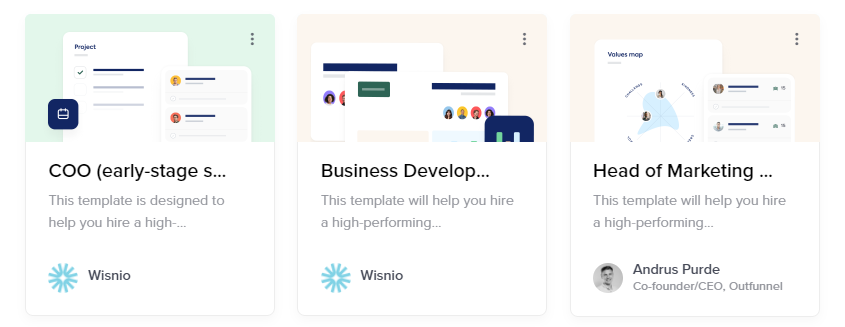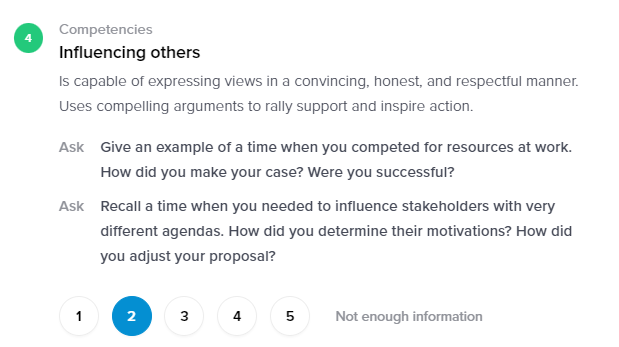Succession planning best practices
Understand what a succession plan looks like and how to use it to your advantage.
Most companies understand that their current and future success relies heavily on having the right leaders in the right roles. Yet, few can deliver it. The key to unlocking that continuity lies in having a world-class succession process.
In short, succession planning is a process whereby an organisation ensures a pipeline of ready and able leaders to take over the company's running and various functional areas within it.
Among other benefits, succession planning brings better career development opportunities for all employees, a workforce better prepared to thrive in dynamic conditions, greater organisational stability, resilience, and much more.
While succession might seem like a long and complicated process, in reality, it can be broken down into an easy-to-follow five-step process:
- Business alignment
- Determine pivotal roles
- Develop Success Profiles
- Evaluate candidates
- Create development plans
A word of caution - getting full cooperation and buy-in from the leadership is paramount to successful succession. Everyone from the CEO to the leadership and management teams needs to understand the importance of succession. Having leadership buy-in before moving forward is imperative.
1. Business alignment
The first order of business is to make sure the succession plan supports the company's key strategies and objectives.
For that to happen, all levels of leadership must be aligned with the short- and long-term goals of the company and have a clear understanding of how their functional area is supporting the broader objectives and strategic goals.
While this sounds like common sense, it's not uncommon for companies to have teams that are doing valuable work and achieving their goals, but their goals being, even if slightly, misaligned with the overall company direction.
Having this clear vision and alignment between different functional areas will make the rest of the succession process run a lot more smoothly.
Deliverable: All functional areas are aligned in supporting the broader company business goals.
Why is business alignment important?
- It's not important
- To ensure alignment with key strategies and company objectives
- It helps hire better leaders
2. Determine pivotal roles
Pivotal roles are the functional- and leadership roles that are central for the company to achieve its goals and thus are the target positions for a succession plan.
Having a written and transparent organisational structure comes in handy. It serves as a foundation for understanding first the roles crucial to the running of the company and secondly, if the company has the right structure and people in place to achieve its stated strategic goals.
To make this process go smoother (and help with prioritisation), it's recommended to use a set of guiding questions to rate different positions and their importance.
For example, to what extent does the position:
- Drive revenue?
- Find growth opportunities?
- Influence the performance of other critical functions?
The examples above are mainly finance-based, but the actual questions you use can be anything as long as it helps to decide the importance of the role for the company.
Deliverable: A list of pivotal roles (new or existing) critical for the company's success.
What is a pivotal role?
- An unimportant position that could be removed
- A role that directly supports the executive teams
- A role central for the company to achieve its goals
3. Develop Success Profiles

Success Profiles are like maps that tell you the exact characteristics of an ideal candidate for a given pivotal role. When looking at it, everyone should get at least a general idea of who exactly they're looking for from the needed skills, prior experiences, education, and more.
As a good practice, each Success Profile has to include:
- Role-based key strategic objectives
Key objectives provide a foundation for specifying the basic requirements and mapping the differentiating competencies of the role.
- Basic requirements and technical skills
Critical professional skills, prior experience, formal education, credentials (where relevant), etc.
- Differentiating competencies
These competencies specify generic leadership characteristics that differentiate superior performers from the average.
All of the above are relatively easy to understand and thereby assess. Does the candidate have four years of experience in X - yes or no? Has she worked at a financial institution - yes or no? Same with technical skills - they either know how to do something, or they don't.
Things get more complicated once we bring team fit factors into play. Everyone works in a team, and thereby collaboration and a good working relationship with teammates are imperative. Unfortunately, there isn't a simple way to assess it.
At Wisnio, we use a combination of behavioural science and machine learning to bring data into understanding person and team fit. We use assessments based on proven academic frameworks, which have demonstrated high accuracy and strong predictive power in various settings and cultures.
These data are used to compile Personal and Team Profiles, which predict how any one person is likely to fit into a team of people.
In general, people who are similar in values and different in everything else build a trusting relationship where conflict is easy to bear, and different approaches create synergy and agility.
Scorecards
In addition to the Success Profiles, there needs to be a process to evaluate each candidate in a fair and unbiased way.
Emotion and personal feelings often play a part in making decisions, and rarely do they make them better. To remove emotions and bias, we recommend using category-based scorecards as a companion for Success Profile.
Each Success Profile category gets its section on the scorecard - strategic objectives, basic requirements & technical skills, required competencies, and team fit factors. Each section will be scored (scale of 1 to 5) and totals calculated to effectively compare different candidates and better understand where their strengths and weaknesses lie.
Using scorecards also has the added benefit of having a clear understanding of each candidate's key development areas.
Deliverable: Success Profiles for all pivotal roles with scorecards for better candidate comparison.
How do scorecards help with candidate evaluation?
- Scorecards help remove emotion and bias
- Scorecards eliminate candidates
- Scorecards are not connected with evaluation
4. Evaluate candidates

Example interview questions from Wisnio
Before the evaluation process can begin, you'll need to have a pool of candidates for each Success Profile. Exactly how many candidates to have per position depends mainly on the size of the organisation.
At a minimum, each Success Profile should have three candidates ready to be evaluated. Why? Having three candidates makes it an actual process and not just a choice between two people.
To compile the internal candidate shortlists, the knowledge and experience of the leadership team are invaluable. Still, it's worth using other means like diving into the organisational structure to uncover candidates who might fit the criteria but be overlooked by the leadership.
Behavioural interviewing
For the actual evaluation, we recommend using behavioural interviewing techniques whereby candidates are asked to provide specific examples from their past employment and how they behaved in those circumstances.
For each requirement from the Success Profile, candidates are asked predefined questions to validate that they have demonstrated the required behaviours and competencies in the past. For scoring, the scorecards mentioned above developed together with Success Profiles are used.
When comparing different candidates, it's important to note that although skills, knowledge, and experience are vital, so is the fit between the candidate and the existing team.
Skills, knowledge, and experience are relatively easy to acquire, but changing a person's values and behavioural patterns is much more challenging, if not impossible.
Deliverable: Each candidate goes through an evaluation process based on behavioural interviewing techniques using scorecards to keep the score.
What's the minimum # of candides for a Success Profile?
- Four
- Three
- Two
5. Create development plans for internal candidates
The results of candidate evaluation will give a clear picture of the company's current state of succession, and the use of scorecards will highlight the exact areas in which candidates need to improve.
It's useful for both the candidates and leadership to get a clear understanding of key development areas.
The next steps include creating development plans for the candidates with the highest potential in collaboration with the company's learning and development, human resources, or other relevant teams.
Additionally, the data collected for different Success Profiles can be used to develop generic leader profiles and evaluate employees' leadership potential in various functional areas and used as a guide for leadership development programs company-wide.
Deliverable: Clear and actionable development plans for candidates who have shown the highest potential.
Besides succession planning, how can the data from Success Profiles be used?
- To re-organise the senior leadership team
- To identify under-performing employees
- To evaluate the leadership potential of current employees
Conclusions
Succession planning is not something that just happens. Likewise, it's not a one-time project. It's a continuous process and a method that needs clear leadership buy-in and people willing to drive the process from within the organisation.
Luckily, the process itself takes only five steps:
- Define (refine) business goals
- Determine pivotal roles vital to achieving those goals
- Develop specific Success Profiles for all functional areas
- Evaluate shortlisted candidates
- Create development plans for the most promising candidates
Each of these steps is equally important. Without clarity on the company's business goals, it's hard to determine the roles most important. Thus, it's impossible to come up with Success Profiles which are critical to evaluating candidates and without candidates, there is no one to create development plans for.